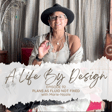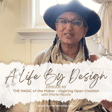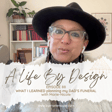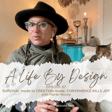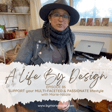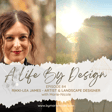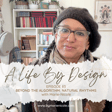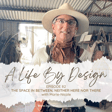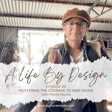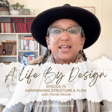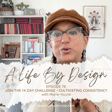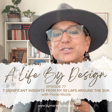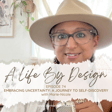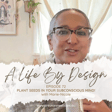
IT’S TIME TO STOP FOLLOWING fashion trends, INSTEAD let YOUR ESSENCE SHINE through
In this episode you will hear stories from two women doing business to their own beat & living their life by design.
Karen Seinor host of the Soulful & Wild Show interviewed me about my [Em]Power Dressing Guidebook and I share stories I have not included in the book.
What you’ll get from this is inspiration to consider what you wear and consider whether or not the habits and practices you formed when it comes to selecting clothes & accessories is actually supportive to you truly thriving in life.
You’ll also here me share how I don’t have a regime to maintain a youthful appearance and that I in fact believe this has been the outcome of me focusing more on my internal wellbeing & what I drape my human vehicle in.
It’ll give you the permission you may be waiting for to truly step into your power and focus on doing what you’re actually here to do and that is contribute your unique thread to the collective tapestry.
_____________
COACHING with MARIE-NICOLE
[Em]Power Dressing Guidebook ...will be help you curate your wardrobe in a way that fosters effortless flow of energy, so you move through your days with confidence, ease & grace, fostering health & well being on so many levels.
Only AU$11 for the e-book.
Register here for ALL ACCESS
Digital Solutions Program - Up to 4hrs of 1:1 Coaching for $45+GST
Monthly Newsletter
Online Store
Soulful & Wild Show hosted by Karen Seinor
Intro & Outro Music: Shaman Dance by slavamusic
We respect and honour Aboriginal and Torres Strait Islander Elders past, present, and future. We acknowledge the stories, traditions, and living cultures of Aboriginal and Torres Strait Islander peoples on this land and commit to building a brighter future together.
_____________
By accessing this Podcast, I acknowledge that the entire contents are the property of Marie-Nicole Meunier, or used by Marie-Nicole Meunier with permission, and are protected under AU and international copyright and trademark laws. Except as otherwise provided herein, users of this Podcast may save and use information contained in the Podcast only for personal or other non-commercial, educational purposes. No other use, including, without limitation, reproduction, retransmission or editing, of this Podcast may be made without the prior written permission of the Marie-Nicole Meunier, which may be requested by contacting
soar@creatorsnest.com.au
This podcast is for educational purposes only. The host claims no responsibility to any person or entity for any liability, loss, or damage caused or alleged to be caused directly or indirectly as a result of the use, application, or interpretation of the information presented herein.
